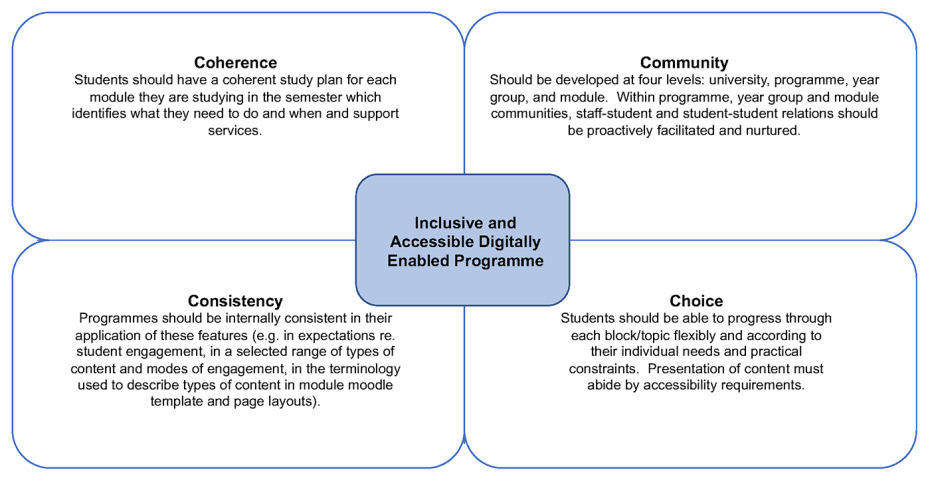This page outlines the recommended process and timeline for the development work taking place during the summer months, in preparation for September delivery. It includes downloadable tools for use by Module Leaders (MLs).
In the first stage in the indicative timeline for the development of digitally enabled programmes, MLs work closely with each other and the PL to establish a programme study map and an assessment and feedback schedule.
In this phase of curriculum review and planning there is a focus on ensuring the programme learning outcomes are met, viewing the timetable of synchronous events across modules, managing student workload and reviewing assessment points. Assessment points are reviewed to ensure that they are staggered and, where possible, that they are reduced in number.
Programme Team Summer Timeline
This is stage one of the indicative timeline for the development of a digitally-enabled programme.


